PROTECT YOUR DNA WITH QUANTUM TECHNOLOGY
Orgo-Life the new way to the future Advertising by AdpathwayGeraniums fill the summertime yard with colorful blooms. Some have blooms as fiery as the sun, with yellow, red, and orange hues, while others are cool blues, purples, and pinks. Many have heart-shaped leaves, and a few have variegated foliage!
Though geraniums love the heat, they may suffer from too much sunshine in the summertime. These sun-lovers need five or more hours of daily direct sunlight. When temperatures rise above 90°F and the plants lack adequate moisture, they’ll begin to shrivel and wither.
With sufficient watering, feeding, and protecting, your heat-stressed geraniums will perk up in no time. Whether you’re growing plants that are Geranium or Pelargonium botanically, we’ll cover everything you need to know to get them performing again. We’ll refer to Pelargonium as geranium or zonal geranium, and Geranium as true geranium. Let’s dig in.
Garden Oya™ Watering Pot
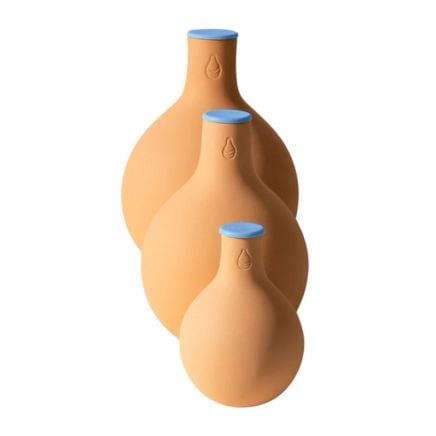
Olla Watering Kit

Promo Watering Can

Step 1: Check the Soil
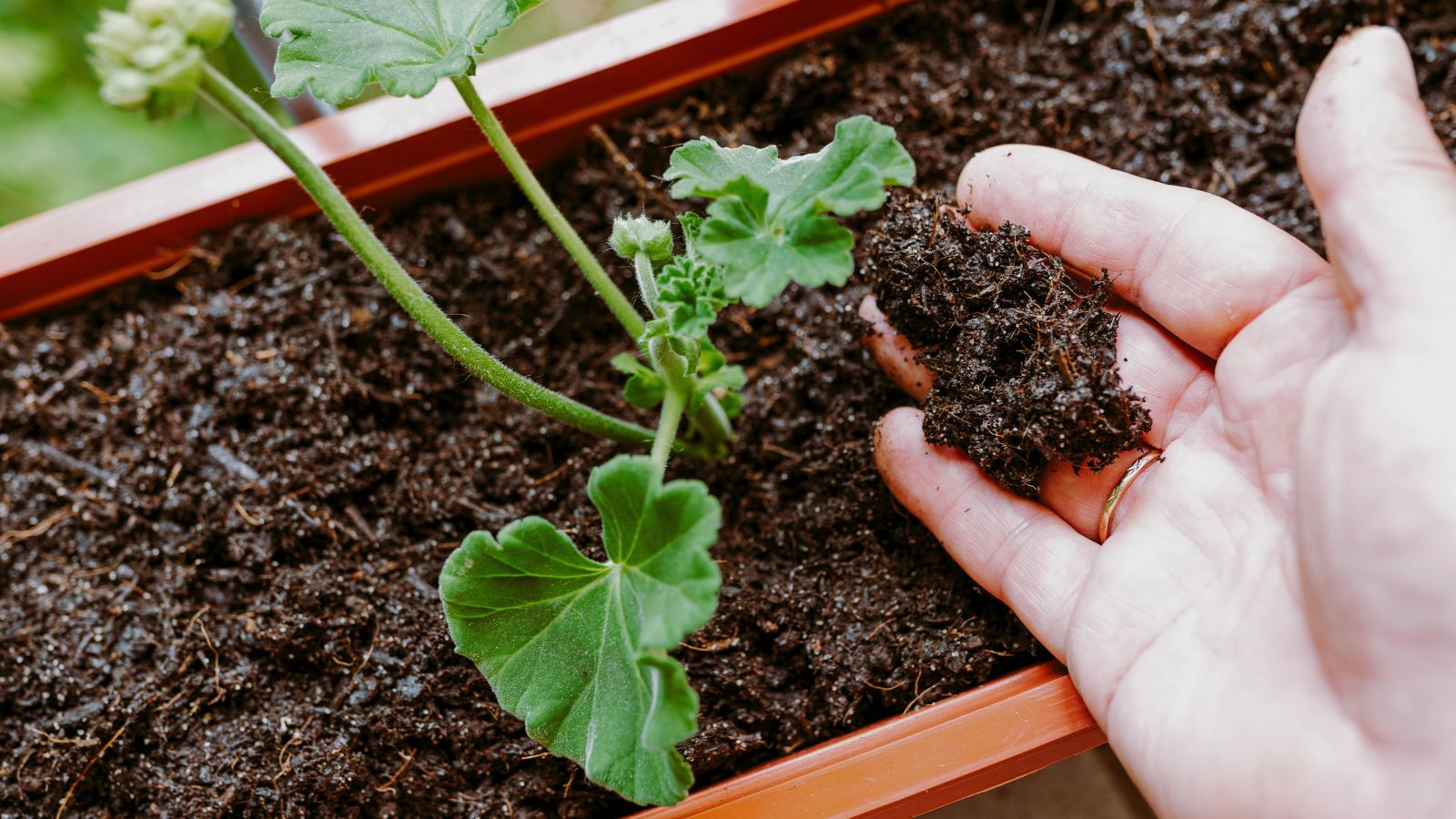 Soil quality impacts moisture retention.
Soil quality impacts moisture retention. The first thing to do for heat-stressed geraniums is to check the soil. Many watering problems occur because of too much or not enough moisture. Growers forget to water in the summer, or they water more than is necessary.
The easiest way to know when to water is to check the dirt with your finger, using the finger test. Stick your finger an inch down into the soil, then lift it out. If it feels moist under the surface and dirt sticks to your finger, you don’t need to water.
If, however, you pick your finger up and dry dirt falls off it, it’s likely time to water. Geraniums prefer their soil to dry out between watering, while true species do well with consistent moisture throughout the growing season.
Are you unsure of which type you have? If the plants survive the winter, they’re likely true geraniums. False geraniums are frost-tender, and they require overwintering indoors in cold zones.
Step 2: Water Thoroughly
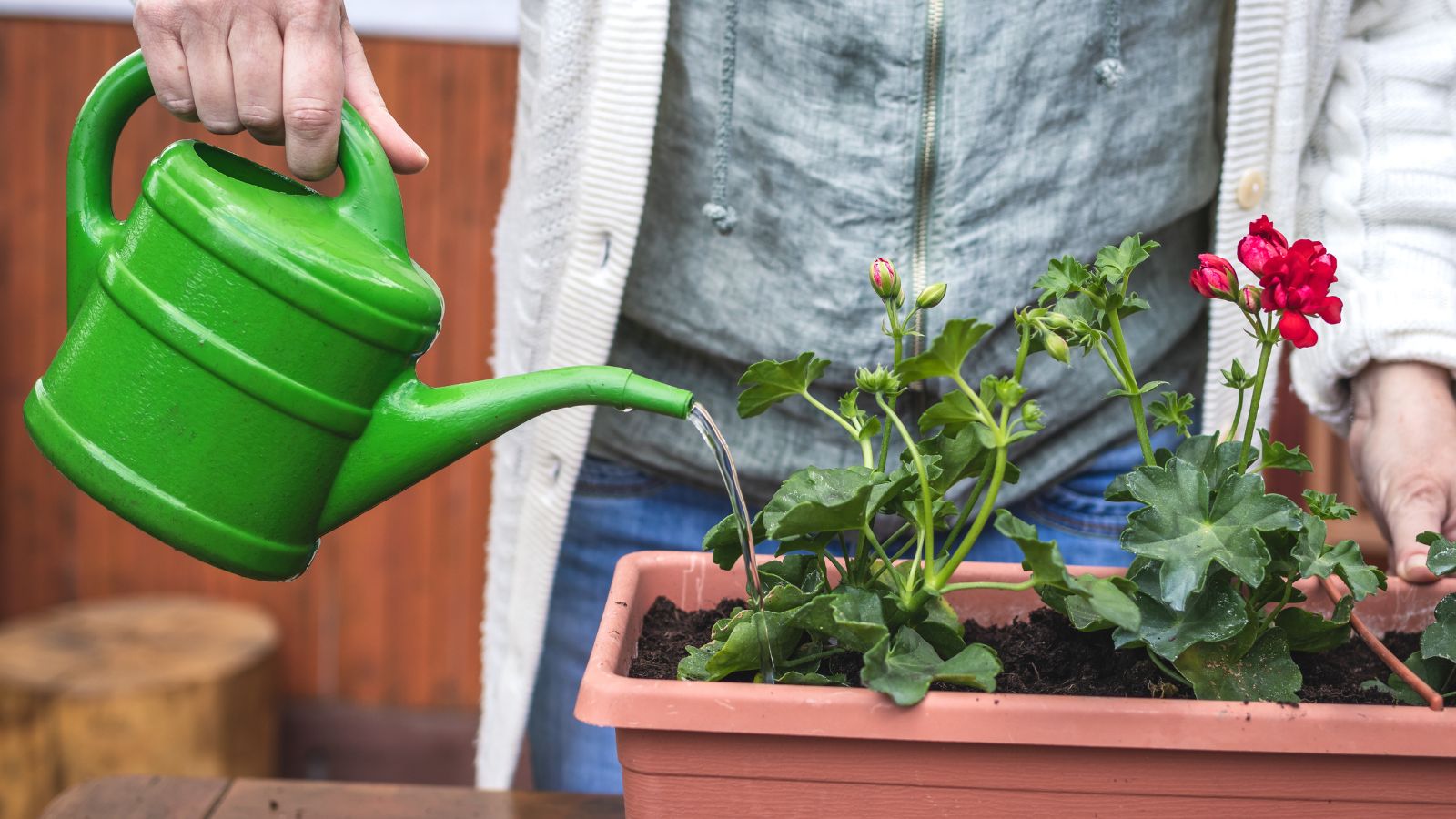 Water when your plants need it, not when it’s too late.
Water when your plants need it, not when it’s too late. How you water heat-stressed geraniums is just as important as when you water. Setting a hose on a low trickle works well, but you’ll need to do this multiple times a month to keep the area wet. It’s much easier to set up automatic sprinklers so you never forget to irrigate.
It’s also better to water deeply and occasionally than often and shallowly. Frequent watering in small amounts leads to small roots that sit near the surface of the soil. When the dirt dries, these plants will suffer tremendously.
Instead, let the soil dry on the surface before thoroughly watering. Set sprinklers for large areas, and consider using olla pots or drip irrigation for raised beds and containers. Olla pots are unique, as they are made of terra cotta. You fill them with water, bury them under the dirt, and let the water slowly seep out of their clay walls.
Step 3: Wait
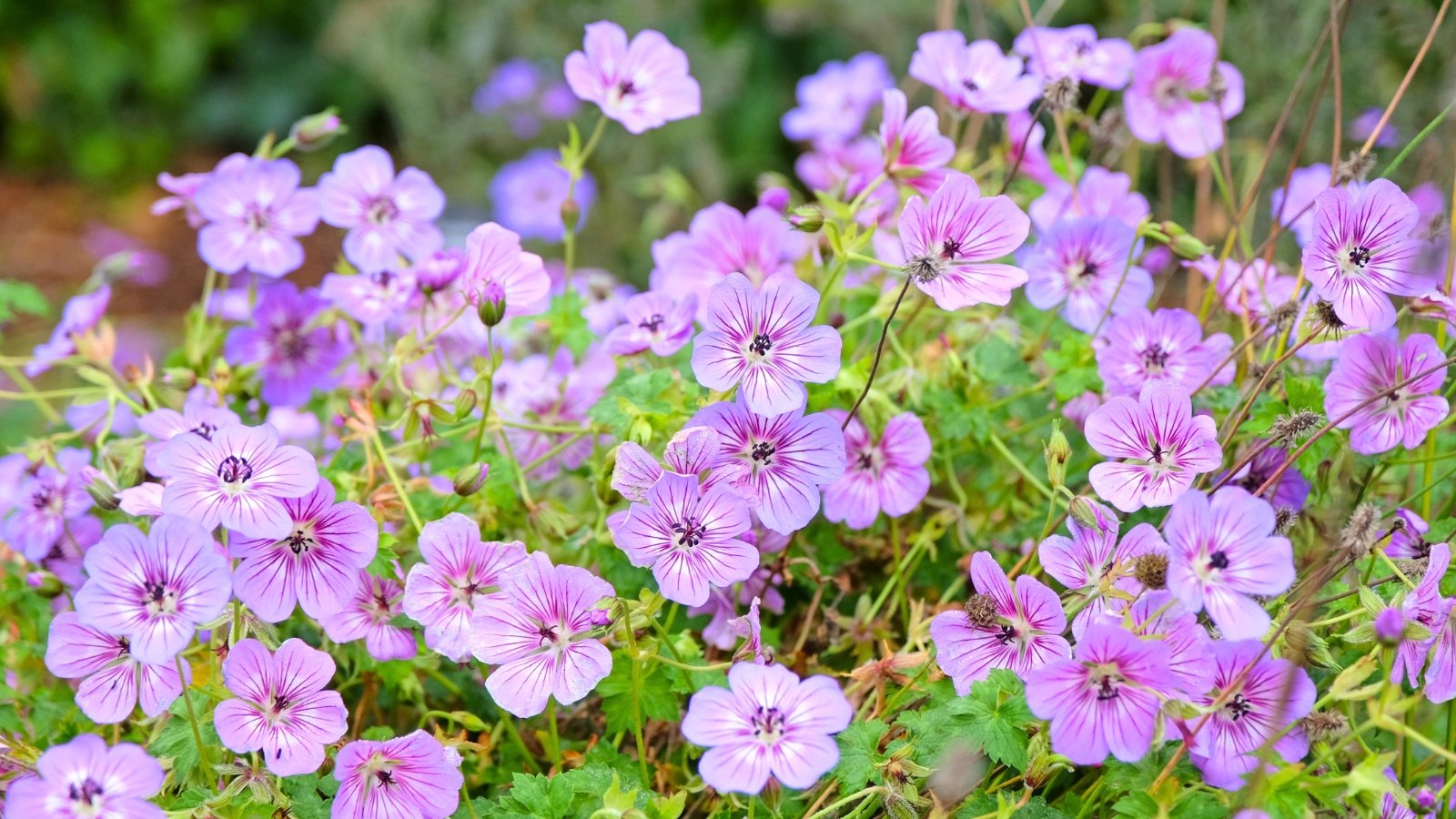 Don’t overwater while you wait for the plant to recover.
Don’t overwater while you wait for the plant to recover. After watering, wait! Your heat-stressed geraniums need some time to soak up the moisture and perk back up. Leave them for a day, then check in on them in the morning. If you caught them before they shriveled, their leaves should unfold and continue growing.
When the heat stresses geraniums past the point they can tolerate, they may lose some of their leaves in order to survive. Some that shrivel may not open back up; they’ll turn brown, crunchy, and dry.
Don’t wait too long, though! The soil will dry, and you’ll have to water again. Wait a day or so to catch the plant when it’s perky.
Step 4: Trim Off Dead Parts
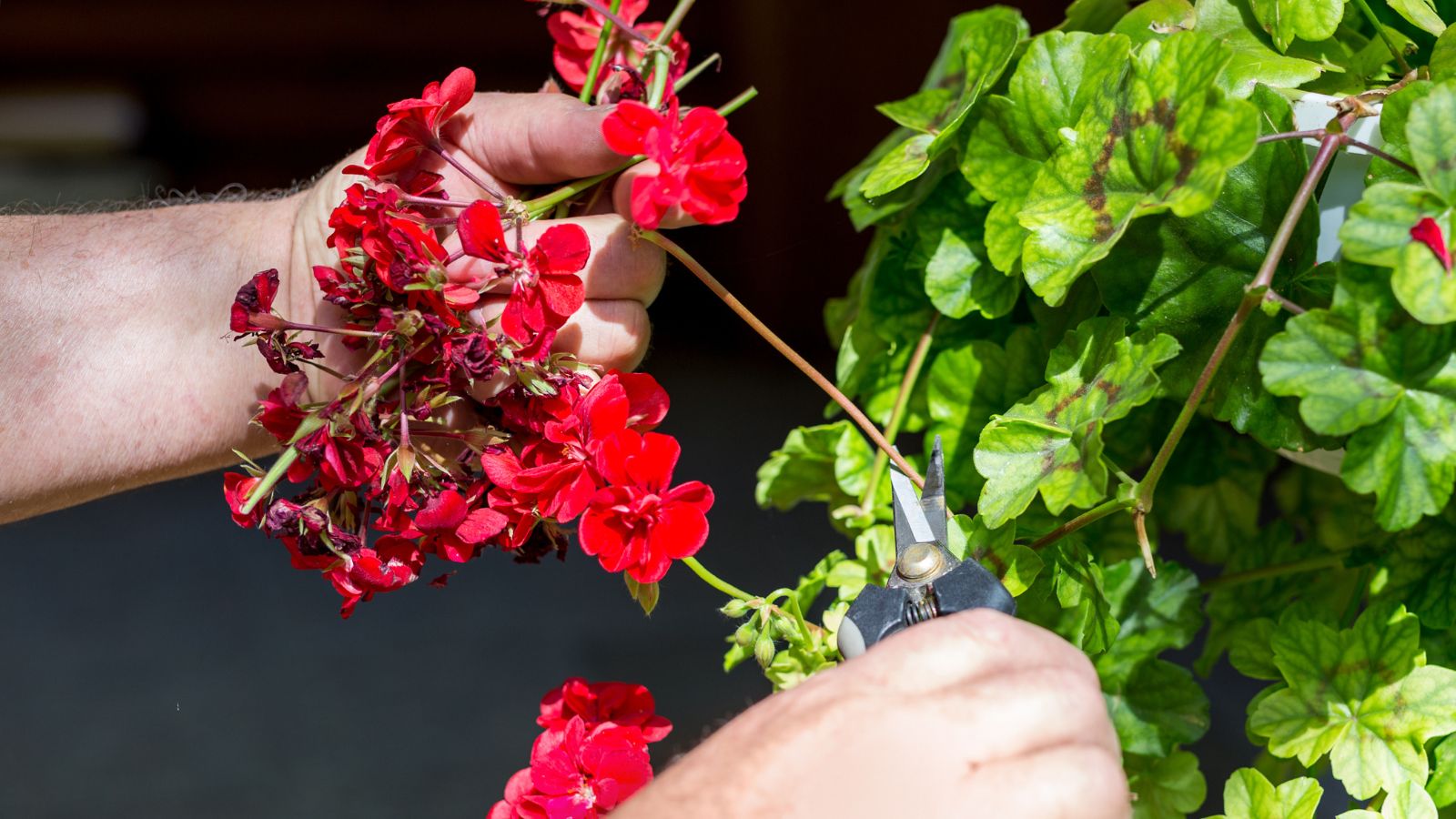 Prune and deadhead to refresh the plant.
Prune and deadhead to refresh the plant. Keep your heat-stressed geraniums looking their best by trimming the dead leaves. Locate spent blooms, shriveled leaves, and dead stems. These parts will fall off over time, but it’s good to trim them off for appearance’s sake.
Herbal snips work well for trimming, as they’re lightweight and their blades are small enough to tuck into tight spaces. You may use pruners if you don’t have snips. Just be careful not to lop off healthy stems while you’re trimming.
Using your snips, slice all the shriveled leaves off the plants. Prune dead, brown stems without healthy growth, and remove spent blooms. Geraniums love deadheading, and pruning off the old flowers will encourage more to form.
Step 5: Water More Often
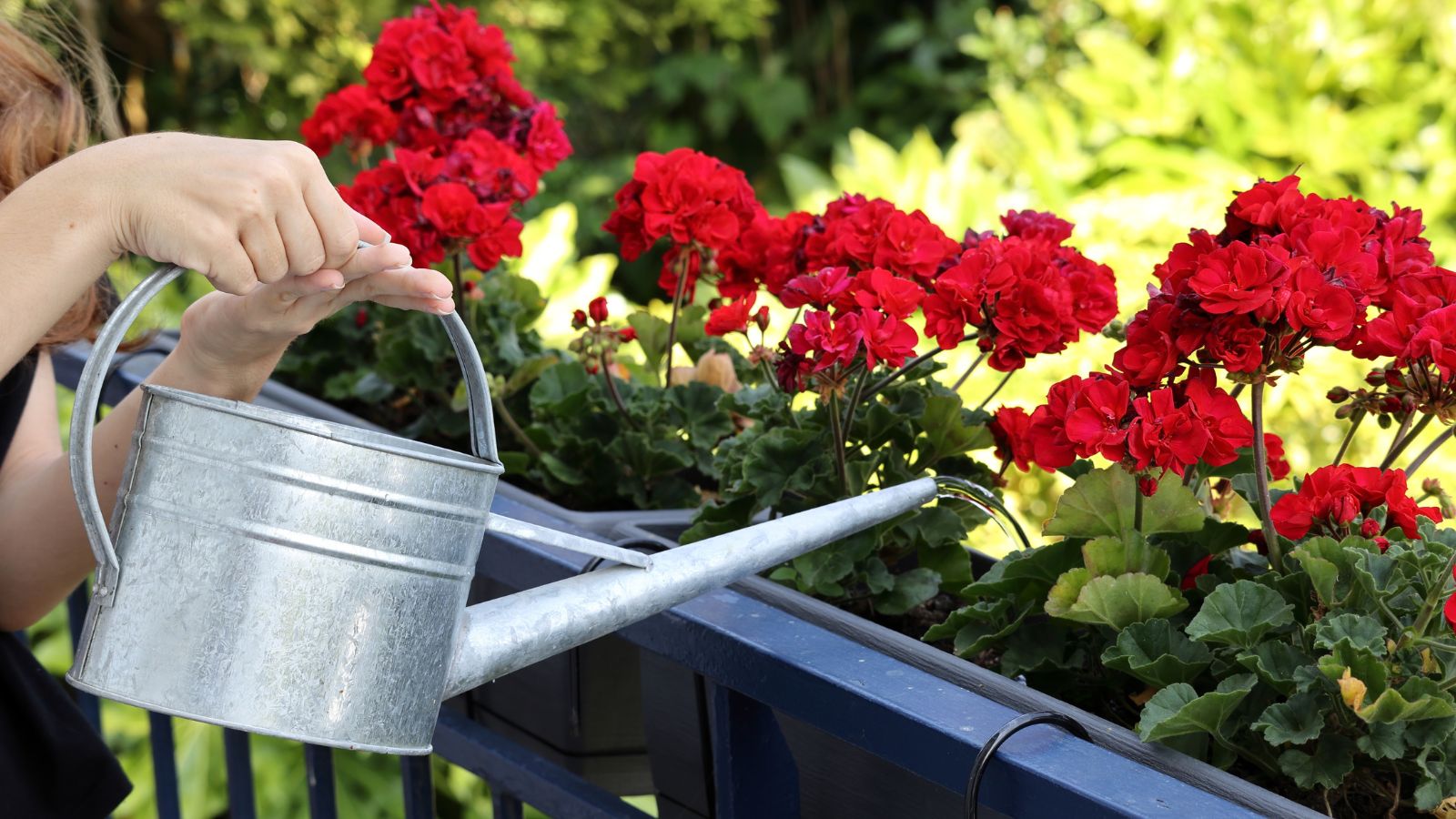 After they have recovered, adjust your watering schedule.
After they have recovered, adjust your watering schedule. Consistent watering is crucial for the future health of your geraniums. True geraniums need regular watering during the growing season, and zonal geraniums prefer to dry out slightly between waterings.
Natural rainfall tends to keep the true types alive. They’re perennial, and they die back in response to extreme heat in summer and frigid frosts in winter. You may water yours if you live in a dry area, or if you’d like to extend the blooming season from spring until fall.
Zonal geraniums need irrigation during the growing season in most areas. Summer heat and arid weather cause the soil to dry quickly. The tender roots need moisture to stay perky and vigorous!
Container specimens and fresh transplants need more water than established geraniums in the ground. They may need daily irrigation in midsummer, and less so when rain falls.
Step 6: Add Shade Cloth
 Temporary shade helps stressed geraniums.
Temporary shade helps stressed geraniums. Occasionally, you can use shade to protect your heat-stressed geraniums. Potted plants are easy to move. Simply pick them up and relocate them from full sun to partial shade, with at least five hours of daily direct sunlight.
Protecting in-ground specimens is a tad more complicated than potted ones. You’ll have to use protective coverings to help the heat-stressed geraniums perk up. Shade cloth is a great choice, though umbrellas and shade sails for the yard also work well.
Shade cloth needs support to stay up. Use bamboo stakes, metal U-posts, or other strong stakes. Tie the shade cloth to each support, pulling it taut so the cloth stays above the tips of the geraniums. You may leave shade cloth up while it’s sunny, as some sunlight penetrates the covering.
Umbrellas are a bit different. Any covering that blocks the sun completely will prevent the plants from photosynthesizing. Put these types of protections up during the hottest parts of the day, and remove them when in the mornings and late afternoons.
Step 7: Monitor Your Geraniums
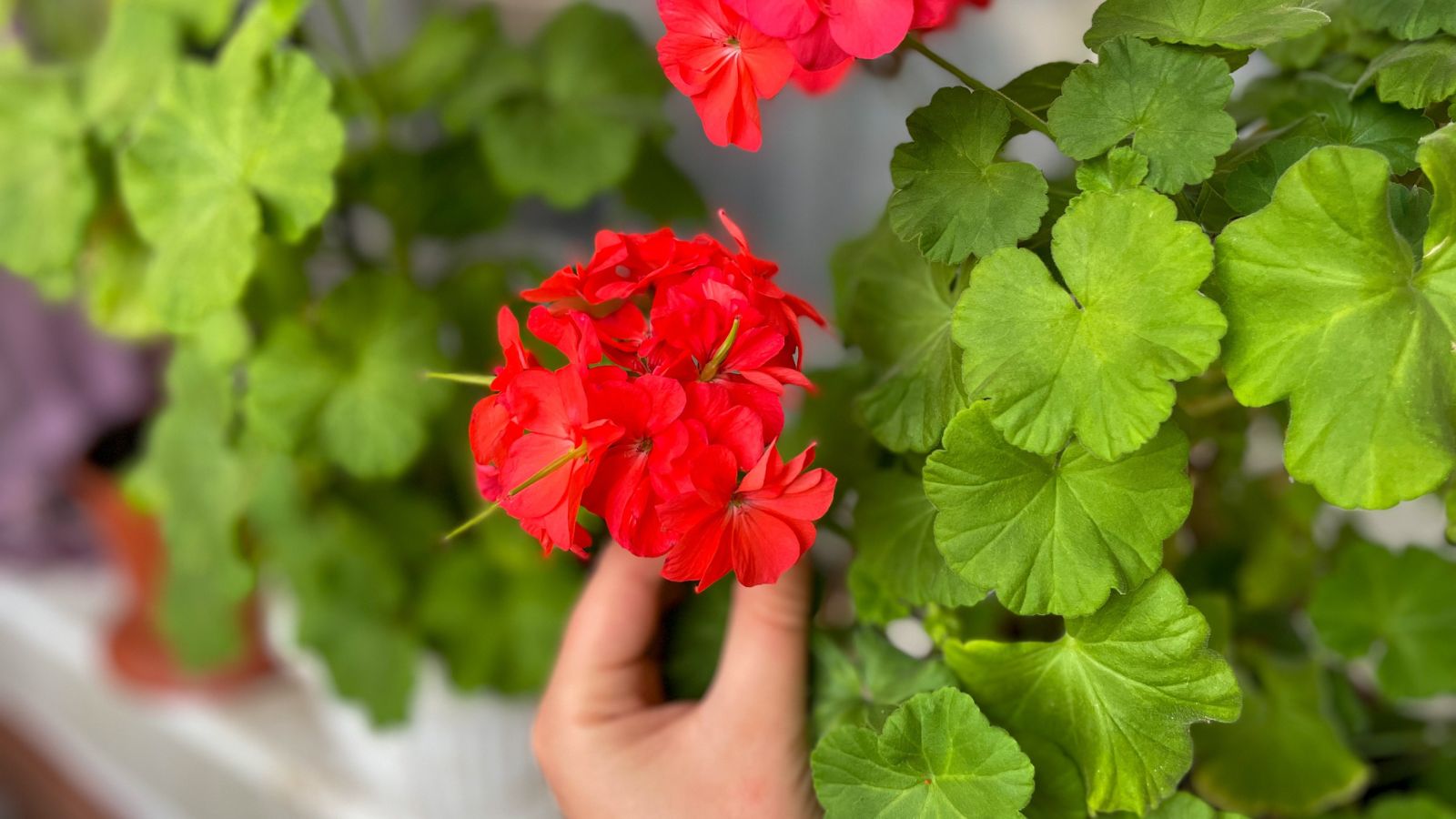 Monitor for future signs of stress.
Monitor for future signs of stress. Your heat-stressed geraniums will perk up with consistent watering, a bit of shade, and some trimming. Keep a close eye on them in the weeks after they recover to ensure they stay in tip-top shape.
At the end of the year, your true geraniums will enter winter dormancy. Their leaves turn yellow and wither, and they pull their energy underground into their roots.
Zonal geraniums need winter protection. Take cuttings and overwinter them indoors, or dig up the plants and put them in pots for growing indoors.


 11 hours ago
6
11 hours ago
6




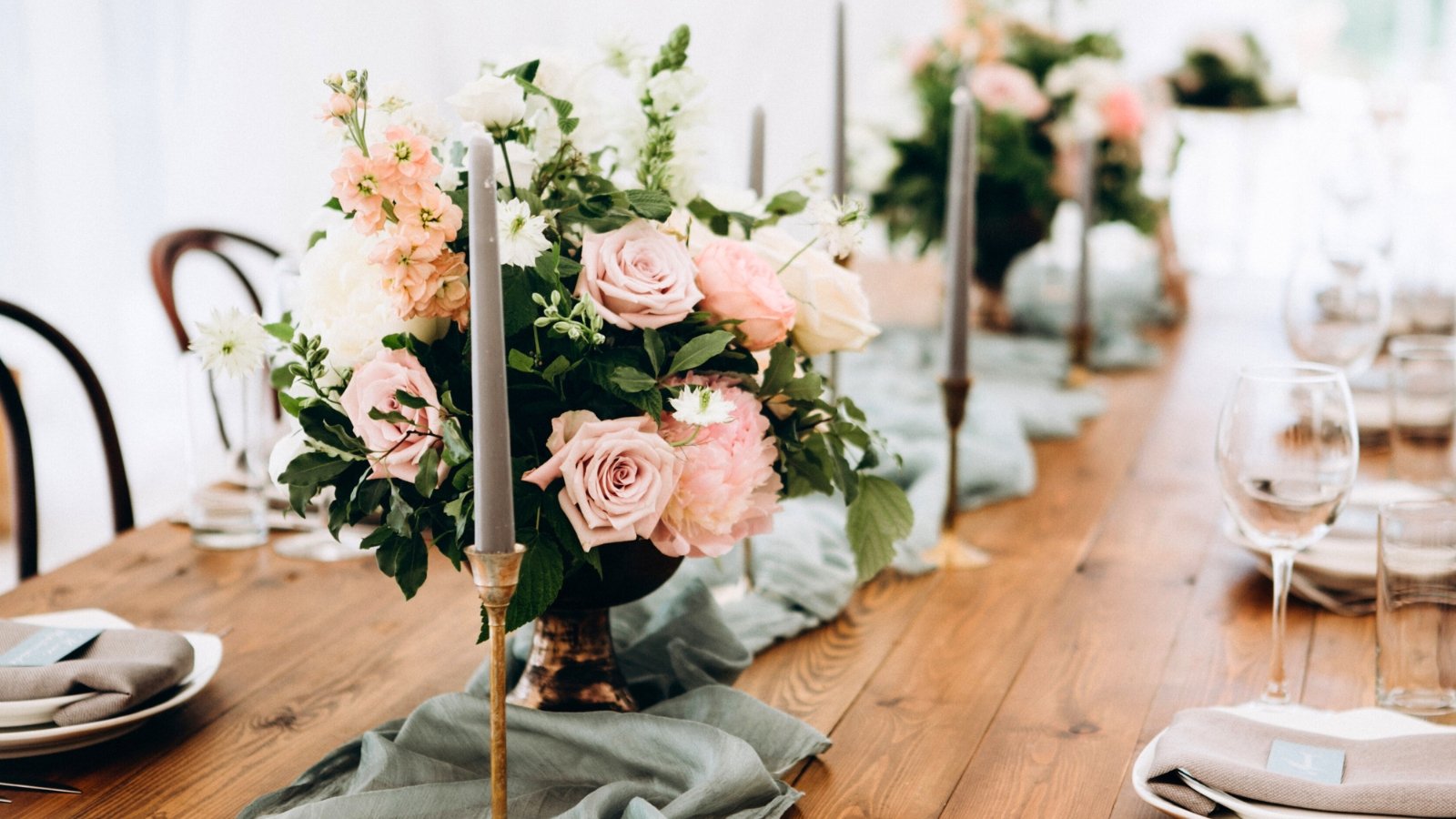
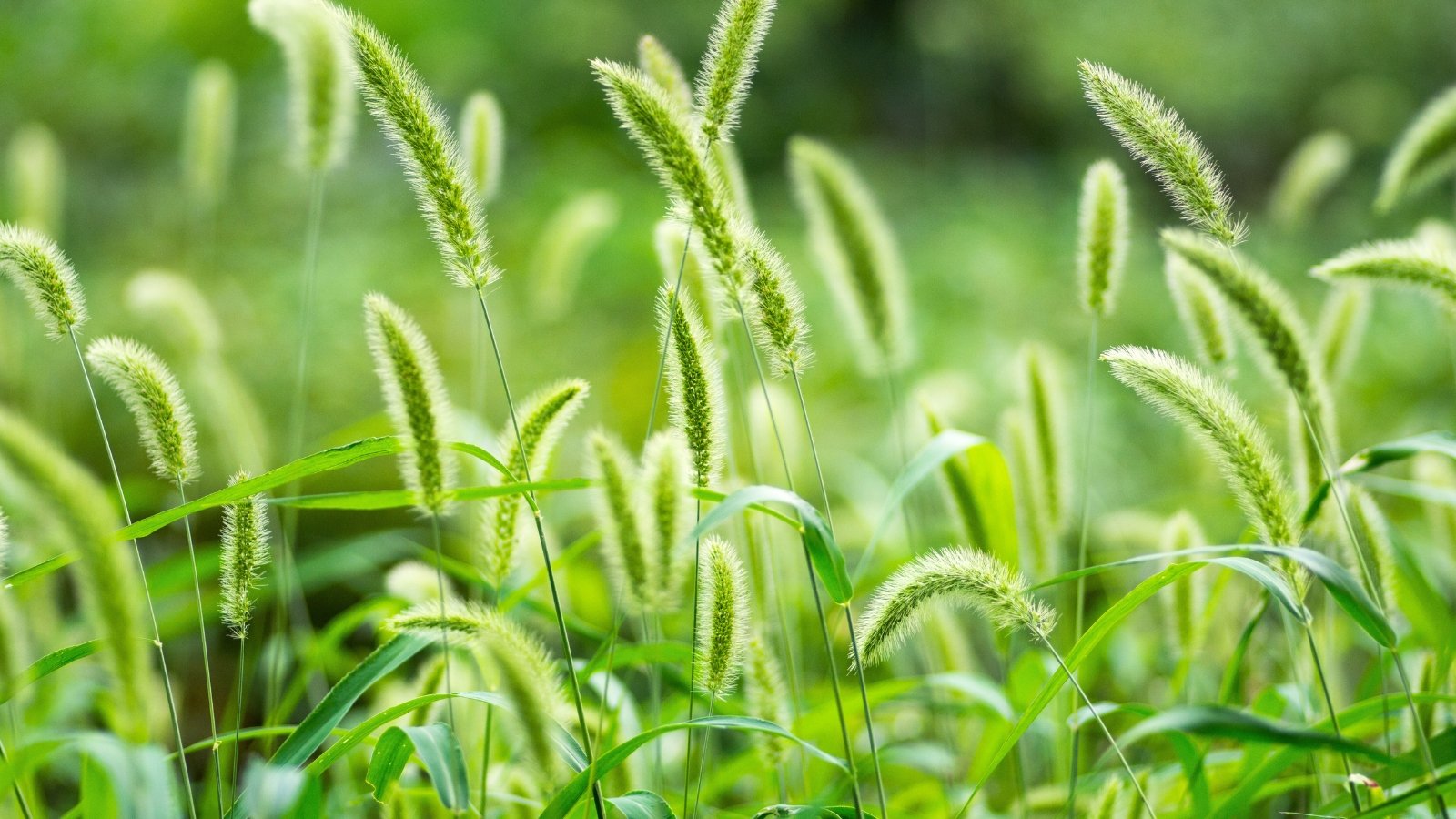















 English (US) ·
English (US) ·  French (CA) ·
French (CA) ·